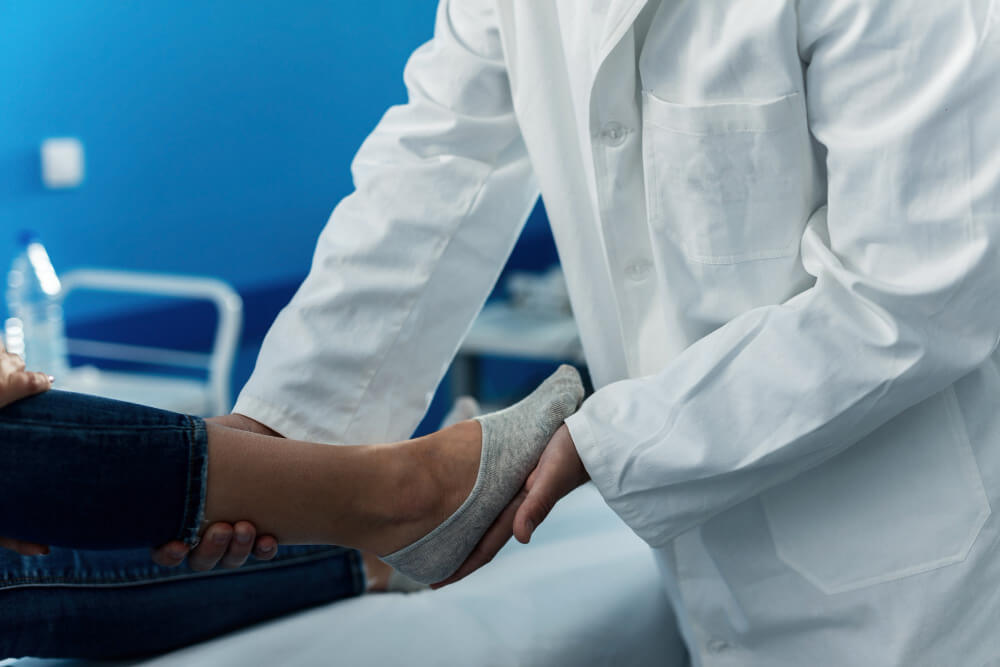Wobbly Joints? Don’t Panic! Orthopedic Secrets to Fix Subluxation
Life is about movement, about conquering stairs, embracing adventures, and expressing ourselves through dance and sport. But what happens when your joints, the hinges of your mobility, start playing a mischievous game of “almost falling out”? Subluxation, the partial dislocation of a joint, can turn life’s dance floor into a wobbly nightmare. Fear not, fellow adventurers! This guide dives into the world of subluxation, empowering you with understanding, treatment options, and the secrets of regaining stability and reclaiming your joyful stride

Unraveling the Wobble: Demystifying Subluxation in Different Joints
Subluxation isn’t a one-size-fits-all culprit. It can lurk in various joints, each with its own sneaky tricks. Let’s unveil the common suspects:
- Knee Jitters: The knee, our sturdy support system, can become vulnerable to subluxation due to ligament injuries, sports mishaps, or even genetic predispositions. The telltale signs? A feeling of instability, clicking or popping sounds, and a wobbly knee that threatens to give way at any moment.
- Shoulder Shudders: Imagine reaching for the top shelf and suddenly feeling your shoulder partially slip out of its socket. Ouch! Subluxation in the shoulder can be triggered by sports like volleyball or swimming, or simply by awkward movements. It often presents with pain, limited range of motion, and a feeling of apprehension with overhead activities.
- Beyond the Big Ones: Don’t think subluxation is a party reserved for major joints. The sneaky villain can target other areas, too. Jaw subluxation might present with clicking and popping sounds when chewing or yawning, while finger subluxation can manifest as painful, unstable joints, and even finger dislocations. Even lesser-known joints like the ribs can experience subluxation, causing localized pain and discomfort.
From Diagnosis to Delight: Unveiling the Orthopedic Toolbox
So, you suspect subluxation is messing with your mobility. What now? The good news is that orthopedic specialists have a toolbox full of tricks to diagnose and treat your wobbly woes. Here’s a peek inside:
- Pinpointing the Problem: Diagnosis starts with a thorough physical examination and detailed discussion of your symptoms. Imaging techniques like X-rays and MRIs might be enlisted to get a closer look at the joint structure and identify any underlying damage.
- Non-Invasive Solutions: Before resorting to surgery, a symphony of non-invasive options takes center stage. Bracing and splinting can provide support and stability, while targeted physical therapy exercises strengthen the muscles surrounding the joint, improving its resilience. Pain management techniques like injections can offer relief while your body works on its comeback.
- Surgical Solutions: In some cases, surgery might be the best route to long-term stability. Arthroscopic procedures, minimally invasive surgeries using small incisions and tiny instruments, can repair damaged ligaments or tighten the joint capsule. For more complex cases, traditional open surgery might be necessary to reconstruct the joint structure.
Empowering Your Recovery: Taking Control of Your Wobbly World

Regaining control is about more than just treatments. Here are some secrets to empower your recovery and prevent future wobbly episodes:
- Strengthening Strategies: Embrace exercises that target the muscles surrounding your vulnerable joint. A strong support system is your best defense against subluxation!
- Listening to Your Body: Pay attention to the warning signs. Pain, unusual popping sounds, and decreased range of motion are your body’s way of saying “slow down!”
- Finding Your Orthopedic Hero: Choose a specialist who understands your specific subluxation type and has a proven track record of successful treatment. Trust and clear communication are key to a successful journey.
Remember, subluxation doesn’t have to be a life sentence. With the right knowledge, treatment, and proactive habits, you can reclaim your confident stride and rediscover the joy of movement. So, step out of the shadows of wobbliness, embrace the power of orthopedics, and dance your way back to a life filled with joyful, pain-free steps!
Bonus Tips:
- Consult your doctor before starting any new exercises or physical therapy programs.
- Maintain a healthy weight to reduce stress on your joints.
- Warm up before activities and cool down afterward to prevent injuries.
- Listen to your body and take breaks when needed.
